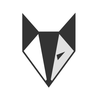Integrating Internet of Things (IoT) technology has emerged as a game-changer. It's not just about designing physical objects anymore; it's about crafting intelligent, connected devices that can communicate, gather data, and make informed decisions. In this article, we will explore the profound impact of IoT integration in mechanical design, unveiling the possibilities it brings to the table.
The IoT and Mechanical Design: A Powerful Duo
- Real-time Monitoring: IoT-equipped devices can continuously monitor their own condition and environment. For instance, a smart thermostat in a building can adjust the temperature based on occupancy and external weather conditions, ensuring optimal comfort and energy efficiency.
- Predictive Maintenance: Machines can now predict when they need maintenance before they break down. This saves businesses valuable time and resources. Sensors in industrial equipment, for example, can detect vibrations or temperature spikes, indicating potential issues.
- Energy Efficiency: IoT integration can lead to significant energy savings. Smart lighting systems can adjust brightness according to natural light levels and occupancy, reducing electricity consumption.
- Enhanced User Experience: Consumers now expect products to be intuitive and user-friendly. IoT devices can collect data on how users interact with them, enabling continuous improvement through software updates.
- Data-Driven Design: IoT generates vast amounts of data. Designers can use this data to refine and optimize product designs based on real-world usage patterns.
- Customization: IoT allows for product personalization. For instance, a fitness tracker can adapt its recommendations based on an individual's activity level and health goals.
- Safety: In industrial settings, IoT can enhance safety by remotely monitoring hazardous conditions. For instance, sensors can detect gas leaks and trigger alarms.
Challenges and Considerations
- Data Security: With the vast amount of data being collected, ensuring data security and privacy is paramount. Robust encryption and authentication mechanisms are essential.
- Interoperability: Different IoT devices and platforms must be able to communicate seamlessly. Standardization efforts are ongoing to address this challenge.
- Power Consumption: Many IoT devices are battery-powered. Balancing functionality with power efficiency is a critical design consideration.
- Scalability: As IoT networks grow, they must be able to scale to accommodate more devices and data traffic.
- Cost: IoT integration can be costly, especially for small businesses. It's essential to weigh the benefits against the initial investment.
Use Cases
- Smart Home Appliances: From thermostats to refrigerators, IoT-enabled appliances make homes more convenient and energy-efficient.
- Wearable Health Devices: Fitness trackers and smartwatches monitor health metrics and encourage healthier lifestyles.
- Industrial Automation: Factories use IoT to optimize production processes, monitor equipment, and improve worker safety.
- Agriculture: IoT sensors can monitor soil conditions, weather, and crop health, helping farmers make informed decisions.
- Transportation: Connected vehicles collect data on driving habits, traffic conditions, and maintenance needs.
- Healthcare: IoT devices in healthcare can monitor patients remotely, reducing the need for hospital visits.
- Smart Cities: IoT is used to manage traffic, conserve energy, and improve public services in urban areas.
Conclusion
IoT integration in mechanical design is not just a technological trend; it's a transformative shift in how we approach product design and functionality. It empowers designers to create devices that are not only smarter and more efficient but also more attuned to the needs of users and the environment.
As IoT technology continues to advance, the possibilities for mechanical design course are limitless. The key is to embrace this evolution, recognizing that IoT is not just a buzzword but a powerful tool that can shape the future of product design and manufacturing.
In conclusion, the fusion of IoT and mechanical design is ushering in a new era of innovation, one where the objects around us are not just things but intelligent, connected companions that enhance our lives and in web development career as well.







Top comments (1)
nice